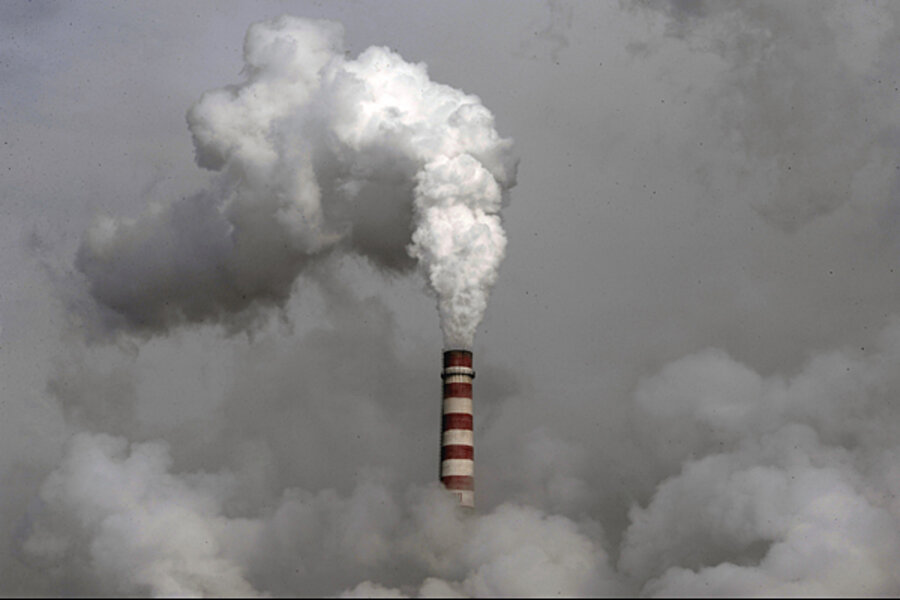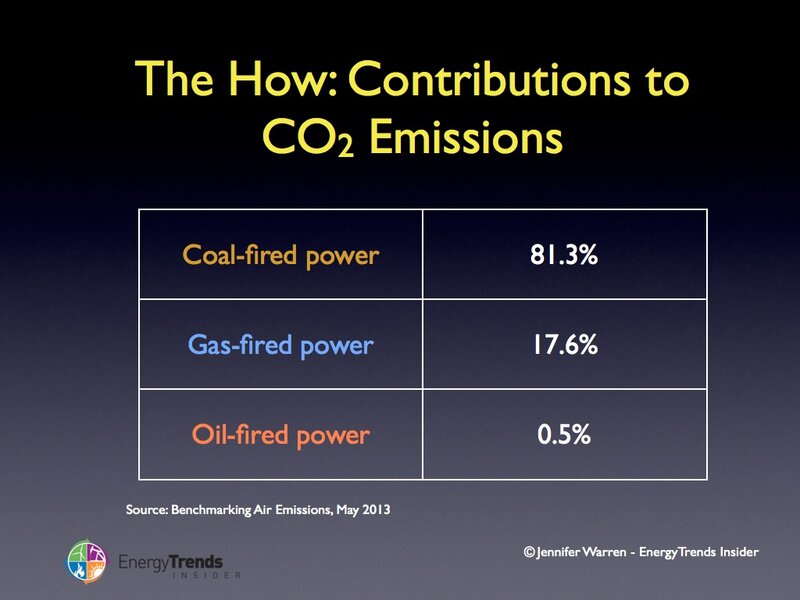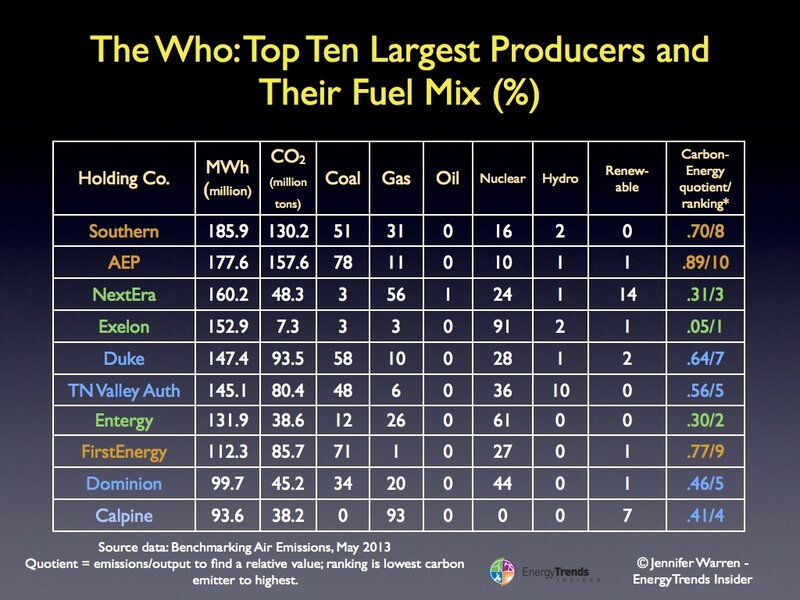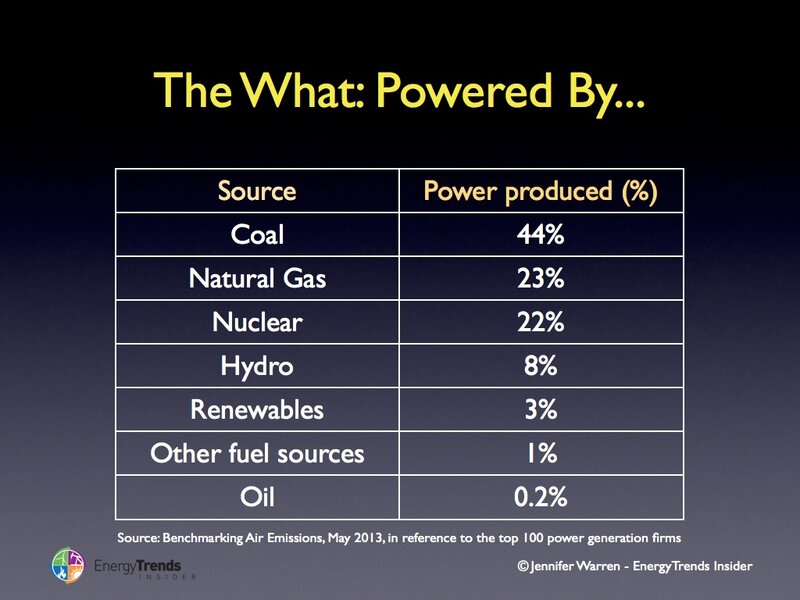How 'green' is your power?
Loading...
U.S. Power Producers Offer Insight for Investors and Policymakers Worldwide
As the number two carbon emitter on the globe, behind only China, U.S. power generation’s impact on carbon emissions can shed light on our progress. U.S. data can also inform other countries as they make choices regarding their energy portfolio mixes, particularly in power generation fuel source decisions. It would seem easier to start cleaner than to become cleaner.
Carbon emissions, a chief culprit in the warming of the planet, crossed a new threshold with uncertain consequences in May to 400 parts per million (ppm). The last time concentrations were this high was 3 to 5 million years ago — featuring an earth with higher sea levels and forests extending to the Arctic Ocean, according to an atmospheric scientist. It was a reminder to those concerned about the effects of climate change and others supportive of a lower carbon economy that considerable heavylifting lies ahead. A goal of 450 ppm is considered a threshold to ward off temperature rises higher than 2 degrees Celsius, or 3.6 Fahrenheit.
The financial community and shareholders appear to be the influential tail stirring the wind around the emissions mega-dog. It is worth noting that publicly-traded firms are supposed to disclose “material” effects of climate-related risks on business operations. Ratings agencies such as Moody’s and Standard and Poor’s have looked at the credit impacts of climate change in the power sector. In ten year’s time, institutional investors of the Investor Network on Climate Risk, numbering 100 with $10 trillion in assets, are influencing firms to disclose risks and opportunities associated with climate change and the shift toward a lower carbon economy. In a study by the U.S. SIF Foundation, 11% of professionally-managed U.S. investments — $ 3.74 trillion — were selected based on environmental, social and governance (ESG) criteria.
State of Power
As the U.S. economy potentially takes off again, the impact on carbon emissions (CO2 ) offers a time to reflect. Power generation is a major source of carbon emissions, and a recent report, “Benchmarking Air Emissions,” reveals important indicators.
Power plant CO2 emissions have increased 20% since 1990, but between 2008-2011 they declined 7%, owing to recessionary impacts of a slower growth economy, meaning less demand for power. Power plants have also sourced more low carbon fuel sources such as natural gas; some coal-fired power plants have added pollution controls, which reduce emissions, plus the retiring of older coal plants. The Energy Information Administration expects emissions to decline modestly to 2016 and then rise again to 2040 (“Benchmarking,” p. 28). The 100 largest power producers emitted 2.1 billion tons of CO2 ; 4.1 million tons of SO2 ; 1.7 million tons of NOX , and 25 tons of mercury.
The contributions to carbon dioxide emissions in 2011 according to the EPA, include electricity production (38%), industrial production (14%, includes fossil fuel combustion), and commercial residential (10% includes using power). This offers an idea as to the scope of power generation’s contributions and the industry’s report card.
The Report Card in Brief
Of America’s 100 largest power producers, accounting for 86% of electricity produced in 2011: (see figure 1, left)
The next slide (see figure 2, left) offers a look at the top ten power generation firms ranked by their output, energy mixes, and contributions to carbon emissions. Their carbon-to-energy quotient indicates how their output relates to emissions. A lower quotient means less contributions to emissions, which have been color-coded brown (coal) to blue (blue-flamed natural gas) to green (nuclear, renewables).
Discussion: Five of these top ten produced 25% of the entire emissions output in 2011. A few other details emerged from the benchmarking report. Southern Company added 14,000 MW of gas-fired power between 2000-2011, which reduced its CO2 emissions from 1,722 to 1,400 pounds per MW/hour for a 19% improvement. NextEra Energy added 20,000 MW of wind, solar, and natural-gas fired power between 2000-2011, and doubled its capacity; CO2 rates fell from 1,023 to 603 pounds per MW/hour, for a 41% improvement.
On the carbon-to-energy output quotient calculations, obviously the nuclear power play of Exelon was the lowest emitter, the green color. Interestingly, the gas-heavy power producers were in the top five of lower emitters, my greens and blues in order, Entergy, NextEra and Calpine. The browns are heavier emitters, with ample opportunities to reduce emissions.
Note: The top 100 firms analyzed only account for 80% of gas-fired power, 39% of oil-fired power, 85% of hydro producers and 69% of renewables and others. Therefore, the numbers above potentially understate the less carbon-intensive fuels and oil-fired power. From 2000-2011, natural gas generation increased 69%, coal dropped 12%, and renewable generation increased 44%.
According to the report, some firms clearly pollute more than others, even if using the same fuel mix for various reasons. And none of the absolute most carbon-intensive producers are in the top ten of largest energy producers, though some come close.
Powerful Plans
Until a carbon price becomes a factor, in the short-term, coal is the least expensive power generation input. Some of the natural gas to coal switching has reversed back with natural gas prices rising. But natural gas usage is expected to grow with its 60% lower emissions profile than coal. More gas-fired plants will be built. While natural gas contributed 23% to U.S. power generation (from the top 100), the expectation is that globally by 2040, natural gas will produce 30% of global power from 20% today. In the U.S., public policies from state and local governments to reduce carbon emissions will also impact the switch to natural gas from coal. The city of Los Angeles recently put such a plan on the books.
Many states and their destination cities have reasons to re-think how they are powered. The least costly energy fuel source may have other costs imposed upon their citizens, economy, and environmental assets. The data provided by the U.S. power industry and the transparency gained offers policymakers around the world important insights.
Source: U.S. Power Generation: Shades of Green, Blue and Brown










